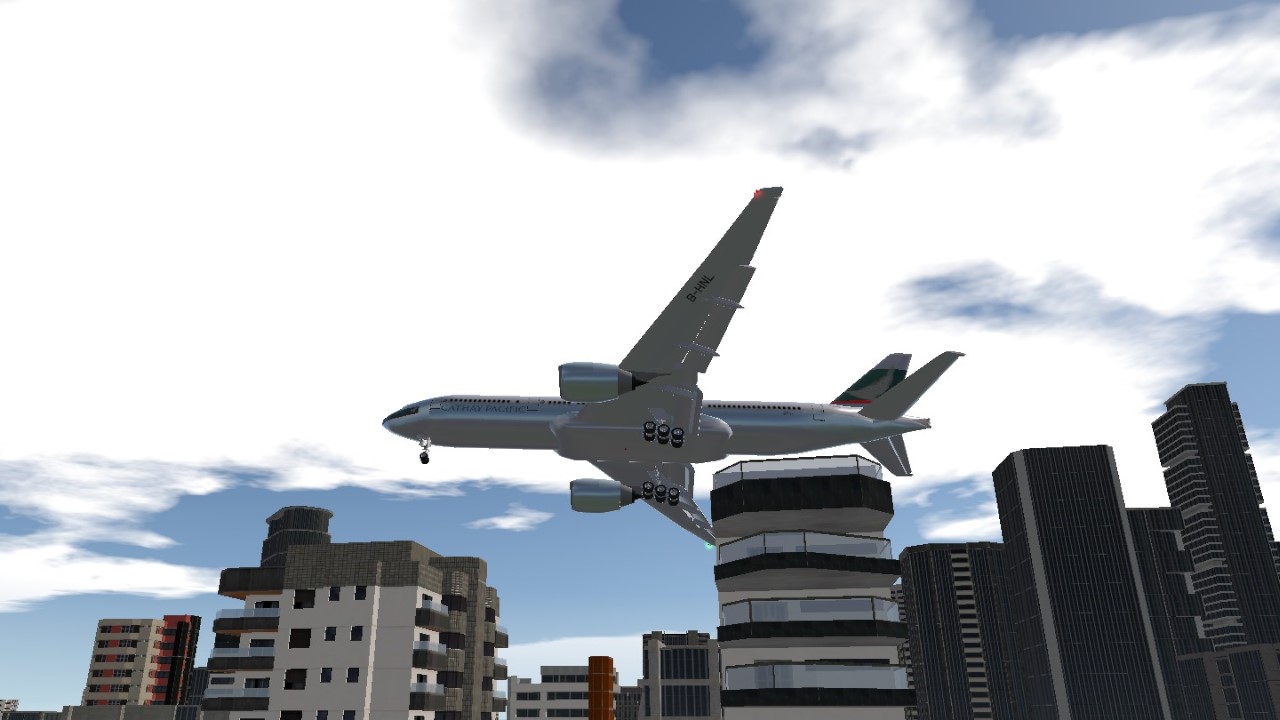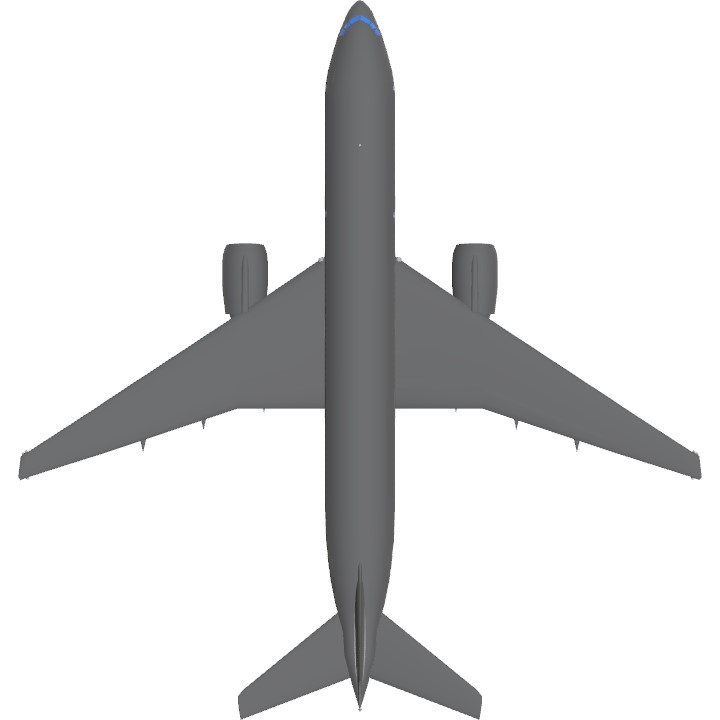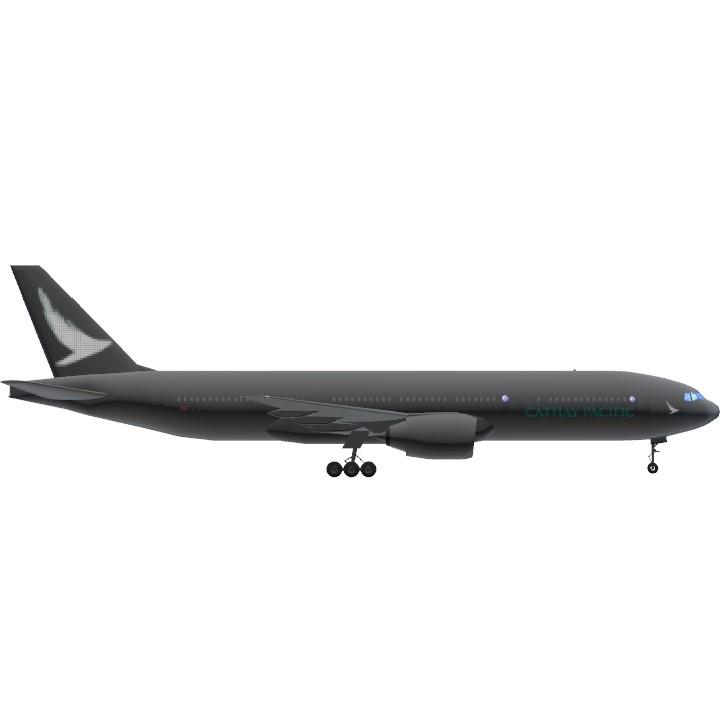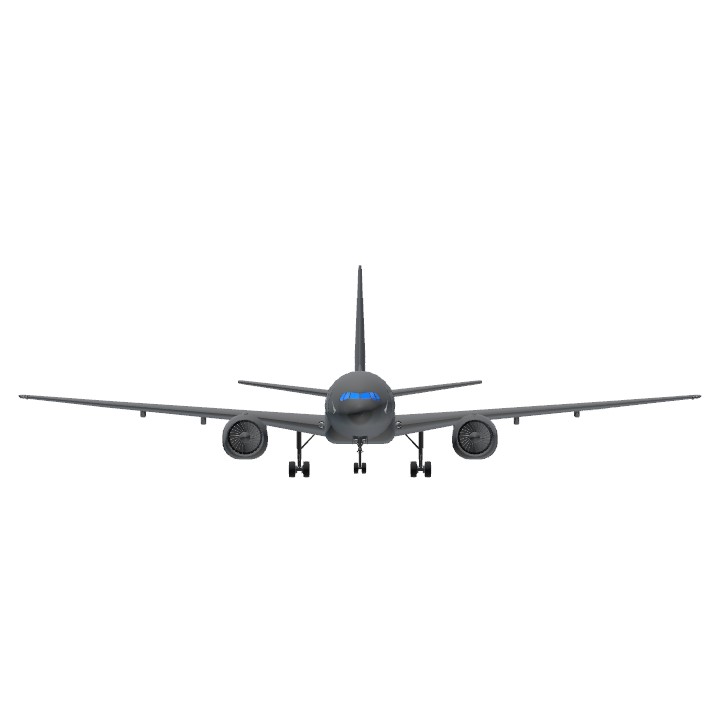Continue with an airline from Hong Kong
This is also the first plane to have screenshots on PC.
About Boeing 777

The Boeing 777, commonly referred to as the Triple Seven, is an American long-range wide-body airliner developed and manufactured by Boeing Commercial Airplanes. The 777 is the world's largest twinjet and the most-built wide-body airliner. The jetliner was designed to bridge the gap between Boeing's other wide body airplanes, the twin-engined 767 and quad-engined 747, and to replace aging DC-10 and L-1011 trijets. Developed in consultation with eight major airlines, the 777 program was launched in October 1990, with an order from United Airlines. The prototype aircraft rolled out in April 1994, and first flew in June of that year. The 777 entered service with the launch operator United Airlines in June 1995. Longer-range variants were launched in 2000, and first delivered in 2004.

An Emirates 777-300ER
The Triple Seven can accommodate a ten–abreast seating layout and has a typical 3-class capacity of 301 to 368 passengers, with a range of 5,240 to 8,555 nautical miles (9,700 to 15,840 km; 6,030 to 9,840 mi). The jetliner is recognizable for its large-diameter turbofan engines, raked wingtips, six wheels on each main landing gear, fully circular fuselage cross-section, and a blade-shaped tail cone. The 777 became the first Boeing airliner to use fly-by-wire controls and to apply a carbon composite structure in the tailplanes.
The original 777 with a maximum takeoff weight (MTOW) of 545,000–660,000 lb (247–299 t) was produced in two fuselage lengths: the initial 777-200 was followed by the extended-range -200ER in 1997; and the 33.25 ft (10.13 m) longer 777-300 in 1998. These have since been known as 777 Classics and were powered by 77,200–98,000 lbf (343–436 kN) General Electric GE90, Pratt & Whitney PW4000, or Rolls-Royce Trent 800 engines. The extended-range 777-300ER, with a MTOW of 700,000–775,000 lb (318–352 t), entered service in 2004, the longer-range 777-200LR in 2006, and the 777F freighter in 2009. These second-generation 777 variants have extended raked wingtips and are powered exclusively by 110,000–115,300 lbf (489–513 kN) GE90 engines. In November 2013, Boeing announced the development of the third generation 777X (variants include the 777-8, 777-9, and 777-8F), featuring composite wings with folding wingtips and General Electric GE9X engines, and slated for first deliveries in 2026.
As of 2018, Emirates was the largest operator with a fleet of 163 aircraft. As of March 2025, more than 60 customers have placed orders for 2,352 777s across all variants, of which 1,748 have been delivered. This makes the 777 the best-selling wide-body airliner, while its best-selling variant is the 777-300ER with 833 delivered. The airliner initially competed with the Airbus A340 and McDonnell Douglas MD-11; since 2015, it has mainly competed with the Airbus A350. First-generation 777-200 variants are to be supplanted by Boeing's 787 Dreamliner. As of May 2024, the 777 has been involved in 31 aviation accidents and incidents, including five hull loss accidents out of eight total hull losses with 542 fatalities including 3 ground casualties.
About Boeing 777-200
The initial 777-200 made its maiden flight on June 12, 1994, and was first delivered to United Airlines on May 15, 1995. With a 545,000 lb (247 t) MTOW and 77,000 lbf (340 kN) engines, it has a range of 5,240 nautical miles (9,700 km; 6,030 mi) with 305 passenger seats in a three-class configuration. The -200 was primarily aimed at US domestic airlines, although several Asian carriers and British Airways have also operated the type. Nine different -200 customers have taken delivery of 88 aircraft, with 55 in airline service as of 2018. The competing Airbus aircraft was the A330-300.
In March 2016, United Airlines shifted operations with all 19 of its -200s to exclusively domestic US routes, including flights to and from Hawaii, and added more economy class seats by shifting to a ten-abreast configuration (a pattern that matched American Airlines' reconfiguration of the type). As of 2019, Boeing no longer markets the -200, as indicated by its removal from the manufacturer's price listings for 777 variants.

N774UA pictured in 2002, the second Boeing 777-200 produced
About Cathay Pacific

Cathay Pacific Airways Limited, or simply Cathay Pacific, is the flag carrier of Hong Kong, with its head office and main hub located at Hong Kong International Airport. The airline's operations and its subsidiaries have scheduled passenger and cargo services to more than 190 destinations and more than 60 countries worldwide including codeshares and joint ventures.
Cathay Pacific operates a fleet consisting of Airbus A321neo, Airbus A330, Airbus A350, and Boeing 777 aircraft. Cathay Cargo operates two models of Boeing 747, the B747-400ERF and B747-8F. Defunct wholly owned subsidiary airline Cathay Dragon, which ceased operations in 2020, operated to 44 destinations in the Asia-Pacific region from its Hong Kong base. In 2010, Cathay Pacific and Cathay Cargo, together with Cathay Dragon, transported nearly 27 million passengers and more than 1.8 million tons of cargo and mail.
Cathay Pacific was founded on 24 September 1946 by Australian Sydney H. de Kantzow and American Roy C. Farrell. The airline celebrated its 70th anniversary in 2016. As of March 2024, its major shareholders are Swire Pacific with a 45% stake, Air China with 30% and Qatar Airways with 9.9%.
Cathay Pacific is one of the founding members of Oneworld. The airline is ranked as a 5-star airline and has been ranked as the world's best airline four times by Skytrax. In 2018, it was the 19th-largest airline group in the world ranked by traffic. As of 2025, it is ranked as the third best airline in the world.

History of B-HNL
B-HNL is a Boeing 777-200 aircraft that was built by Boeing Commercial Airplanes as the prototype of the 777. It rolled off the assembly line, originally registered as N7771, on 9 April 1994 and first flew on 12 June. It then spent 11 months in flight testing and certification and on 19 April 1995, the aircraft type was certified by the Federal Aviation Administration (FAA) and the European Joint Aviation Authorities (JAA) with United Airlines being its launch customer. After six years in Boeing's test fleet, it was briefly placed in storage, but then refurbished for sale to Cathay Pacific and re-registered as B-HNL. It was retired 18 years later, performing its final flight on 18 September 2018 to the Pima Air & Space Museum where it was placed on static display.

B-HNL, originally registered as N7771, at Geneva Airport on 9 September 1995

B-HNL approaching Hong Kong International Airport(IATA:HKG/ICAO:VHHH)

B-HNL on display at the Pima Air & Space Museum
Control
Ag1 - Arm Speed brakes (requires gear down)
Ag2-4 - Strobe/Landing/Cabin Lights
Ag5 - Open front left door
AG6 - Pushback
AG8 - Engines, Nav/Taxi/Beacon lights
De-activating 8 will cut power to all lights
optional: 2 Forward doors can open(just connect them to the pistons)
Credit
BloomieCircleThavel for vertical stabilizer
That's all, enjoy!

Specifications
Spotlights
- Cellado 5 months ago
General Characteristics
- Predecessor Boeing 777-267
- Successors 1 airplane(s) +35 bonus
- Created On Windows
- Wingspan 198.6ft (60.5m)
- Length 209.1ft (63.7m)
- Height 68.2ft (20.8m)
- Empty Weight N/A
- Loaded Weight 118,128lbs (53,582kg)
Performance
- Power/Weight Ratio 0.642
- Horse Power/Weight Ratio 0.025
- Wing Loading 21.3lbs/ft2 (104.0kg/m2)
- Wing Area 5,547.8ft2 (515.4m2)
- Drag Points 14715
Parts
- Number of Parts 490
- Control Surfaces 11
- Performance Cost 2,539





Tagged:
@Cellado
balls
TUFF
@Aviationguy24 I use Jundroo City mod (it only works on PC version)
What map are you on in the thumbnail? Great plane btw!